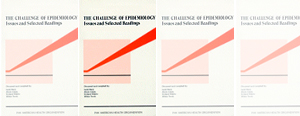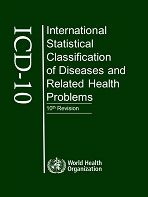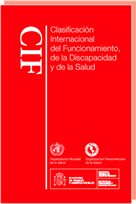Health Information & Analysis
- Details
From the production of primary data to the elaboration of complete health situation analysis, the generation of strategic health information is a basic principle of public health, on which to base the identification of needs, inequalities and priorities in health, and the monitoring of actions and policies to address them.
The Health Information and Analysis Unit (HA) coordinates PAHO's efforts to collect, process, manage, analyze, and disseminate health data and statistics from PAHO's Member States and technical areas. It contributes to the strengthening of health information in the Region through technical cooperation in the areas of: Strengthening of health information systems, Health situation analysis, Regional Core Health Data Initiative, and Family of International Classifications.
Virtual course for coders in the ICD-10
The Pan American Health Organization will conduct, from October 15, 2018, the Basic Course for coders in the ICD-10, in a new format that incorporates the updates of the ICD-10 from 2016 to 2018.
Course materials: pdf Volume 1 - pdf Volume 2 - pdf Volume 3
New Publication
Health Indicators: Conceptual and operational considerations [Spanish] [Portuguese]
Technical Units
Strengthening of health information systems
Regional Core Health Data Initiative
Family of International Classifications
The Challenge of Epidemiology. Issues and Selected Readings (1989)

The Challenge of Epidemiology. Issues and Selected Readings (1989) [pdf]
News
Health Situation in the Americas: Core Indicators 2017

Regional Core Health Data Initiative - Basic Indicators - yearly publication [pdf]
Health in the Americas - 2017 Edition
 Health in the Americas - 2017 Edition
Health in the Americas - 2017 Edition
Epidemiological Bulletins
International Statistical Classification of Diseases and Related Health Problems

International Statistical Classification of Diseases and Related Health Problems
pdf Volume 1 - pdf Volume 2 - pdf Volume 3
Manuals and learning materials
Methods, guidelines, tools in epidemiology and health situation analysis

Projects
We are involved in projects with the following institutions and countries:
CIDA-Canada (RELACSIS)
The World Bank
Brazil
Contact
Please contact us with any question: At PAHO headquarters in Washington, DC In PAHO Offices in the countries of the Americas
- Details

La Clasificación Internacional del Funcionamiento, de la Discapacidad y de la Salud, (CIF), es una clasificación de referencia y junto con la CIE constituyen las clasificaciones más importantes de la FCI. La CIF fue aprobada oficialmente por los 191 Estados Miembros de la OMS mediante la resolución 54.21 en la quincuagésima cuarta Asamblea Mundial de la Salud el 22 de mayo de 2001. |
Resolución 54.21 de la Asamblea Mundial de la Salud
Español [pdf, 1,46Mb] | Inglés [pdf, 537kb] | Frances [pdf, 1,2Mb]
La CIF constituye una clasificación novedosa, que amplia el ámbito de la FCI resaltando la necesidad de contar con información de funcionamiento y discapacidad a nivel individual y poblacional para generar evidencia para la planeación de los servicios, evaluación de las intervenciones, programas y políticas de salud pública en los países.
La CIF es una clasificación diseñada con un propósito múltiple para ser utilizada en varias disciplinas y diferentes sectores.
Objetivos
-
Proporcionar una base científica para el estudio y la comprensión de la salud y los estados relacionados con ella, los resultados y los determinantes.
-
Establecer un lenguaje común para describir la salud y los estados relacionados con ella, para mejorar la comunicación entre distintos usuarios como profesionales de la salud, investigadores, diseñadores de políticas y la población general, incluyendo a las personas con discapacidades.
-
Permitir la comparación de datos e información entre países, disciplinas, servicios, y en diferentes momentos a lo largo del tiempo.
-
Proporcionar un esquema de codificación sistematizado para ser aplicado en los sistemas de información en salud.
La clasificación desde el título plantea su amplio ámbito de uso: el término Funcionamiento se incluye como término neutro y abarca: funciones, estructuras corporales, actividad y participación, el término Discapacidad incluye: deficiencias, limitaciones en la actividad y restricciones en la participación y la incorporación del término de Salud se propone dada la necesidad de enfatizar el hecho de que la CIF se concibe dentro de un marco conceptual que permite evaluar la salud de la población.
Volver a [FCI]...
- Details
La Clasificación Estadística Internacional de Enfermedades y Problemas Relacionados con la Salud, Décima Revisión (CIE-10) fue respaldada por la Cuadragésima Tercera Asamblea Mundial de la Salud en mayo de 1990 y se empezó a usar en los Estados Miembros de la Organización Mundial de la Salud (OMS) a partir de 1994.
La clasificación es la última en una serie que tiene sus orígenes en el año 1850. La primera edición, conocida como la Lista Internacional de las Causas de Muerte, fue adoptada por el Instituto Internacional de Estadística en 1893. La OMS asumió la responsabilidad de la CIE a su creación en 1948 cuando se publicó la Sexta Revisión, cuya publicación incluía por primera vez las causas de morbilidad. La Asamblea Mundial de la Salud de OMS adoptó en 1967 el Reglamento de Nomenclaturas que estipula el uso de CIE en su revisión más actual por todos los Estados Miembros.
La CIE-10 constituye uno de los estándares internacionales más usados para elaborar estadísticas de morbilidad y mortalidad en el mundo.
Read more: Clasificación Internacional de Enfermedades (CIE)
- Details
PAHO's main objective in the area of information systems is to improve health information for decision-making and program planning. In recent years, the organization has led an initiative to develop and maintain a regional plan for strengthening health information systems and has joined other initiatives in assisting countries in the production of improved health statistics.
- Details
The World Health Organization (WHO) has for mandate the production of international classifications on health that constitute the International Family of Classifications. These classifications constitute a group of integrated classification products to be used alone or jointly, with the purpose of improving health through the provision of information for decision-making at all levels.
The International Statistical Classification of Diseases and Related Health Problems - 10th Revision (ICD-10) is one of the international standards most frequently used for morbidity and mortality statistics in the World.
The purpose of the ICD is to allow the systematic registration, analysis, interpretation and comparison of mortality and morbidity data collected in different countries or areas, at different times. The classification converts diagnostic terms and other health problems from words to alphanumeric codes so they can be stored and later retrieved for analysis.
|
Volume 1 of the ICD |
Training resources |
Revision of the ICD-10: ICD-11 |
|
The International Classification of Functioning, Disability and Health (ICF) is a reference classification that, along with the ICD, constitute one of the most important reference in the FIC.
The ICF constitutes an innovating classification by widening the application of the FIC to information on functioning and disability at the individual and population levels, in order to generate evidence for the planning of services, evaluation of public health interventions, programs, and policies in the countries.
In order to promote the development, implementation, dissemination, and adequate use of the FIC in National Health Information Systems, WHO relies on support from Collaborating Centers that, along with Regional Offices, are part of the WHO-FIC Network.
The use of international classifications in health information systems requires an adequate knowledge of its contents and of the process to integrate the data in the system.
The adequate application of the international classifications in required in various stages of the process, including the collection, processing, capture, validation, presentation, analysis, and dissemination of the information.
